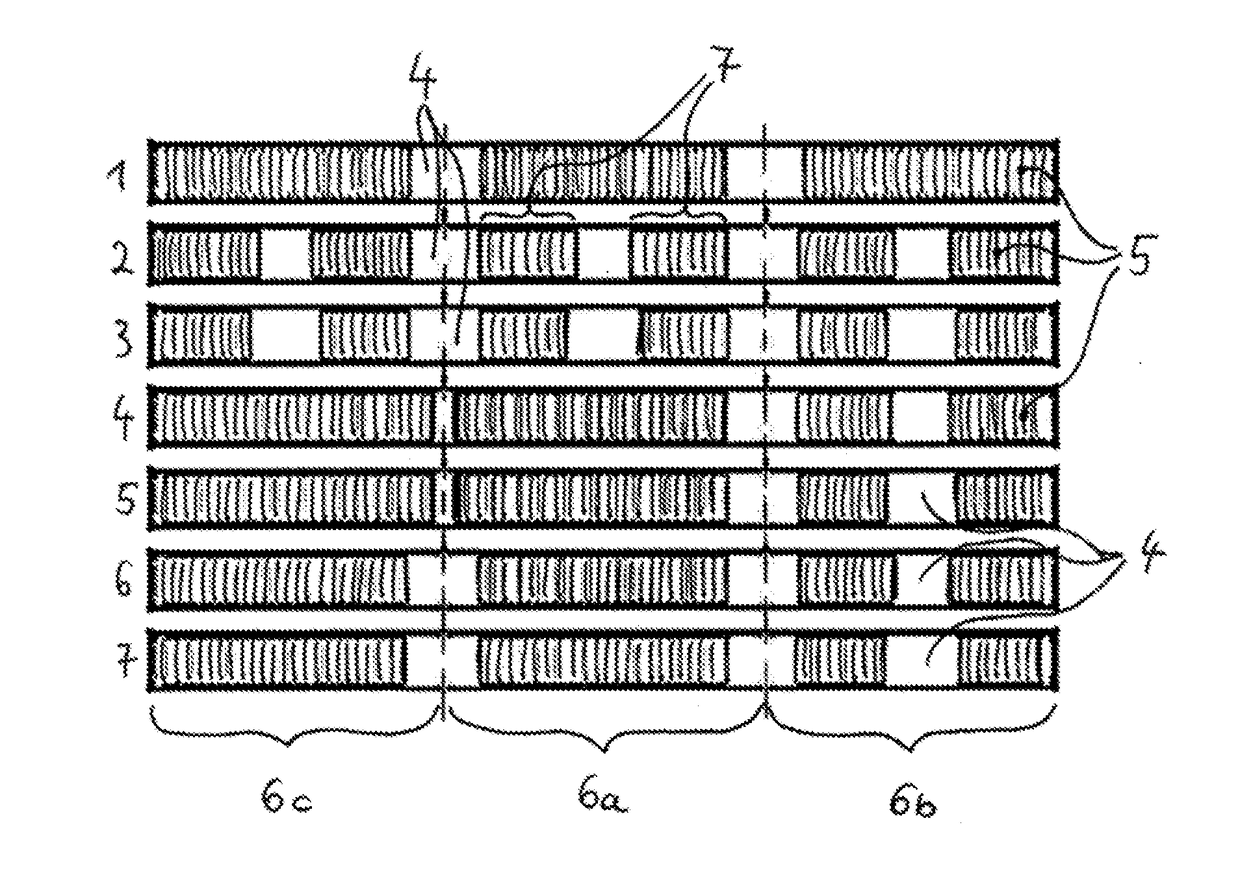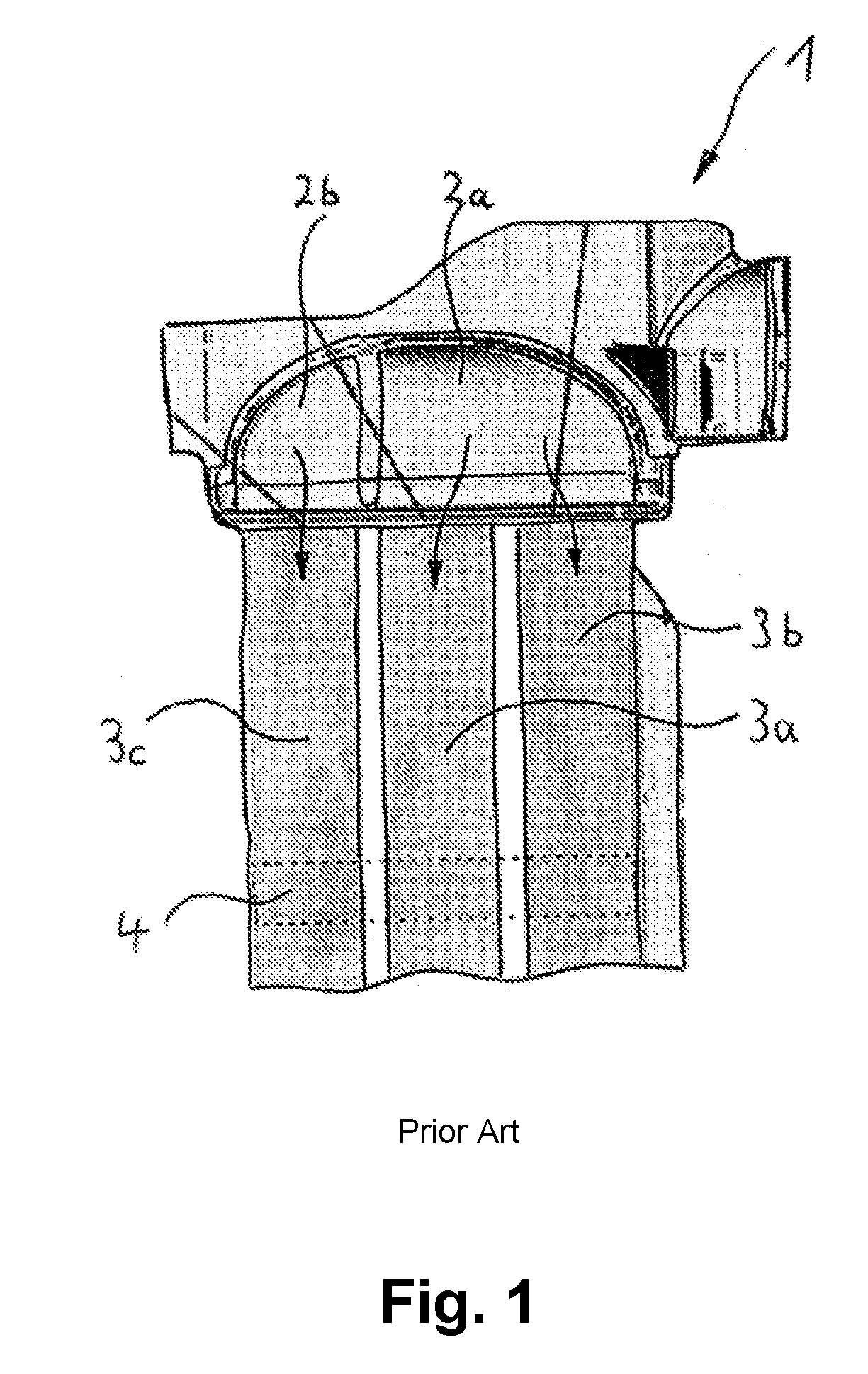Radiator for vehicle / combo cooler fin design
a technology for cooler fins and radiators, which is applied in the direction of heat exchangers, tubular elements, tubular assemblies, etc., can solve the problems of significant reduction of the available construction volume in the engine compartment of a motor vehicle, the possibility of modification, and the air flow experiencing aerodynamic drag, so as to reduce the number of patterns and meet the requirements of high heat transfer performan
- Summary
- Abstract
- Description
- Claims
- Application Information
AI Technical Summary
Benefits of technology
Problems solved by technology
Method used
Image
Examples
Embodiment Construction
[0041]FIG. 1 shows a segment of a sectional view of a heat exchanger 1 according to prior art. The image shows two inlet tanks 2a and 2b, separated from each other by a bridge, which are flooded by a cooling agent intended for cooling of a first coolant circuit and a second coolant circuit. In the example shown, the first coolant circuit of the heat exchanger 1 may be the cooling circuit for cooling an internal combustion engine, and the second coolant circuit may be a circuit for a charge air cooler.
[0042]The cooling agent of the first cooling circuit, which flows in via the first inlet tank 2a, is distributed over the two shown rows of pipes 3a, 3b of the first coolant circuit, floods them, and is cooled in the process. A first outlet tank positioned downstream from the rows of pipes 3a, 3b, via which the cooled cooling agent of the first coolant circuit exits the heat exchanger 1, is not shown.
[0043]The cooling agent of the second cooling circuit, which flows in via the second in...
PUM
 Login to View More
Login to View More Abstract
Description
Claims
Application Information
 Login to View More
Login to View More - R&D
- Intellectual Property
- Life Sciences
- Materials
- Tech Scout
- Unparalleled Data Quality
- Higher Quality Content
- 60% Fewer Hallucinations
Browse by: Latest US Patents, China's latest patents, Technical Efficacy Thesaurus, Application Domain, Technology Topic, Popular Technical Reports.
© 2025 PatSnap. All rights reserved.Legal|Privacy policy|Modern Slavery Act Transparency Statement|Sitemap|About US| Contact US: help@patsnap.com



